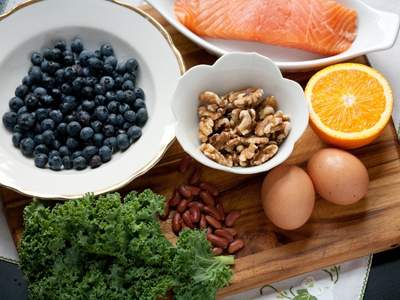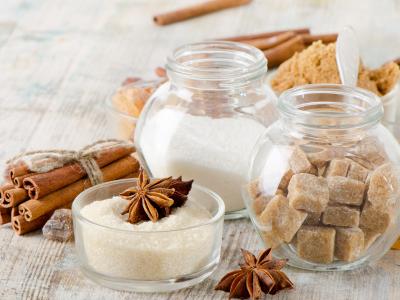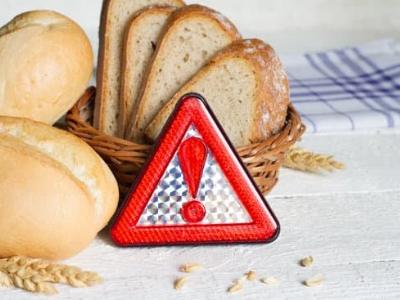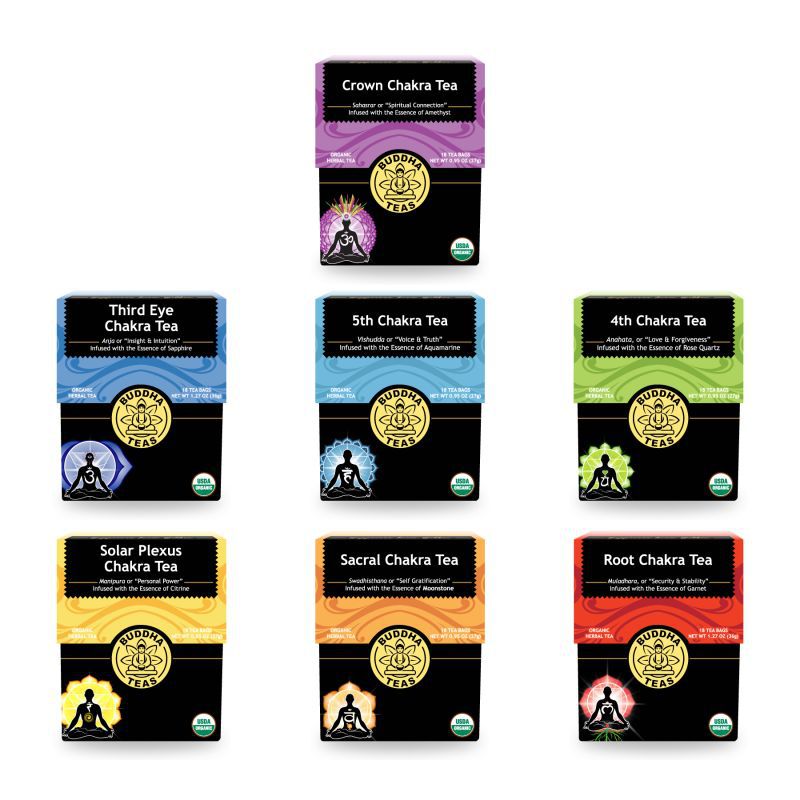Our acupuncture team at Raja Wellness provides a diverse set of experiences and skills. As the owner and clinical director, I have made it a point to find others who share my work ethic and passion for healing. In addition, I look for a diverse skill set. I wanted to take a moment to review our dynamic and exceptionally talented team.

Robert Cecil, LAc - Robert has a passion for healing and a talent for orthopedic and neurological issues. He works with a lot of our veteran patients addressing a diverse range of conditions from chronic pain to neuropathy to PTSD. In addition, his experience with Frequency Specific Microcurrent and Estim scar release techniques provides additional healing modalities in addition to acupuncture.

Fielding Carroll, LAc - For those dealing with chronic digestive disorders such as Chrohns and IBS, Fielding has developed a unique approach combining personalized nutritional therapy with acupuncture to help people radically change their digestive health. Patients report relief from decades-long issues after only a handful of treatments. He is also skilled in Soliman’s Auricular Allergy Treatment (SAAT), offering significant allergy relief from conditions like Alpha-Gal.
Our newest member, Jason Macko, LAc is trained in the 5 element technique, offering a gentle and integrated approach to complex conditions. In addition, he will be part of our team offering SAAT for Alpha Gal and other allergies. He is passionate about helping athletes optimize their performance and recover quickly from injuries. He is also skilled at handling complex cases and helping people reach optimal health.

Together, we offer a wide range of expertise and services to address the mental and physical well-being of our patients. Considering acupuncture as part of your healthcare regimen can be a transformative step toward holistic wellness! By seeking the expertise of a skilled acupuncturist, you embark on a journey to balance and restore harmony within your body, mind, and spirit. Whether you're seeking relief from pain, stress reduction, chronic issues, or overall health improvement, acupuncture offers a gentle yet effective approach rooted in ancient wisdom.
Your path to optimal health starts with a visit to an acupuncturist—discover the profound healing potential of acupuncture today!
Yours in Health,
Jenny-Marie Greenough, LAc
As March unfolds and St. Patrick’s Day festivities commence, amidst the choice of a pint for many, it's important to pause and address the topic of liver health. The liver has many roles in the body:
As a result of these key functions, liver dysfunction can have a cascade of effects including:

Is that last one a surprise to you? It was to me! I was listening to a podcast on kissing spine— an arthritic condition in horses that has become more prevalent. The discussion went to findings in dissections of horses with kissing spine showing bone level bruising throughout the body AND liver pathologies, and that further, when horses with kissing spine were given liver supportive treatments, the disease progression slowed dramatically or even stopped. So I had to dig deeper—was there research into the role of liver dysfunction in arthritis in people? And the answer was a resounding yes.
Now in classical biomedical standards, the liver is not considered diseased until it’s near failure— jaundice, ascites, major problems...but there is also a clear association in the literature between hepatitis B infections and arthritis. So why wouldn’t earlier-stage liver issues from other causes have the potential to cause joint and bone changes? The research certainly points that way. Given all the things our liver does for us, I’ve had a change in perspective. With the abundance of liver-supportive herbs available to us that are safe, why not just plan on a quarterly liver cleanse to help keep that lovely organ happy and healthy?
*If you take supplements, herbs, or prescription medications—do review this protocol with your health care provider or herbalist*

Do keep in mind—all the cleanses and tonics in the world won’t be able to make up for a poor diet! So on a daily basis, remember that your food and drink choices matter! Sugar, alcohol, and junk food add a strain to your liver. Herbal teas, nutrient-rich veggies, and fruits support your liver.
On a daily basis the following herbs can gently support your liver and blood:
In terms of a safe liver cleanse, MediHerb has some lovely herbal complexes to both cleanse and support the liver. So every quarter, I recommend the following protocol: Raja Wellness Quarterly Liver Cleanse
Starting the cleanse with LivCo around the full moon taps into the clearing energy of this celestial body (stay tuned next month where I discuss parasite cleanses and the pull of the full moon for more details). Then take a break for a few days and start the “tonifying” phase with Livton to support the liver as the energy of the new moon helps guide the herbs into a building phase. For most people, doing this 4 times per year will be sufficient. If you don’t regularly take prescription medications, aren’t drinking alcohol on a weekly or daily basis, get plenty of exercise, and manage your stress—then 1-2x per year will be plenty for this cleanse.

In addition to the herbs, I recommend following a liver-friendly diet rich in plant-based proteins, vegetables, and some high-quality fish in addition to nuts, olive oil, and fruits. There is a multitude of research into nutrition for longevity, reduced disease, and health. The common theme among these findings is: to eat a diet high in vegetables, plant-based proteins, and whole grains with small amounts of fruits, grains, and animal proteins. Olive oil, coconut oil, and nuts all have protective properties for the brain and liver. As Jack Lalanne used to say “The longer the shelf life, the shorter your life”. Those handy packaged “foods” are often no longer actual food but merely a food-like product!

Stress and psychological factors have a direct impact on the function of the liver. The more you can regulate stress through lifestyle and exercise, the better the liver will function. In Traditional Chinese Medicine, the liver is represented by the wood element—spring is the time of liver growth with new growth reaching and bending to new heights. A healthy wood element is flexible like the young tree, bending with the wind rather than breaking. The color associated with the liver is green and stones like peridot and malachite can support liver function. And yes, regular acupuncture has been shown to reduce stress and increase overall health- even for healthy patients a quarterly “tune-up” with your acupuncturist can keep new problems from emerging. For patients with a high-stress life or who engage in intense physical training- monthly sessions help keep problems at bay.
Written by Jayelah Bush, BScN
Medically reviewed by Dr. Natacha Montpellier, ND, B.Sc.
Article Courtesy of Fullscript
Bone broth (stock) is a liquid made from simmering bones in water over a period of time. Drinking bone broth on its own, or using it as a base for soups and other dishes, is a great way to get its health benefits. Bone broth contains many important nutrients, including amino acids, collagen, and protein. (11) Scientific evidence suggests that the nutrients in bone broth may support digestive health, joint health, a healthy immune system, and more.
Keep reading below to learn about bone broth benefits, and how to make your own bone broth at home.
Amino acids, the building blocks of proteins in our cells and tissues, are one of the main components of bone broth. Proteins are used within the body to perform many bodily functions as well as repair, build, and grow bodily tissues. (7)(15) Research indicates that the components of bone broth can benefit the body from head to toe, from mental health to skin health.
Bone broth is a good source of the amino acid glycine, which plays a key role as a neurotransmitter (messenger between nerves and cells), influencing brain development, motor skills, and behavior. (4)(11)(18) Glycine also has anti-inflammatory and antioxidant properties. Research demonstrates that glycine can decrease neurological (brain and spinal cord) damage related to oxidative stress in mice. (22) Cellular damage related to oxidative stress can negatively affect the nervous system, potentially playing a role in the development of neurological diseases such as Alzheimer’s disease and Parkinson’s disease. (19)
Beef bone broth is rich in the amino acid glutamine, the most abundant and widely used amino acid in the body. (7)(11) About 30% of total body glutamine is used by the digestive tract to support intestinal health. Its functions include supporting a healthy inflammatory response, maintaining the intestinal barrier, and regulating intestinal cell death. (10) In gut health conditions such as inflammatory bowel disease, glutamine levels are significantly lower than healthy individuals. (8) Regularly drinking bone broth may help increase glutamine levels to support digestive health. (11)
Not only is glutamine a key nutrient for a healthy gut but also a healthy immune system. Leukocytes (white blood cells) require glutamine for proper function. During illness or injury, glutamine is used by the immune system just as much, if not more, than glucose (sugar), the main source of energy for the human body. Glutamine can be created within the body, but levels are often insufficient during times of illness. Research indicates that supplementing with glutamine before or after a major health event, such as bone marrow transplantation, radiation treatment, or surgery, may be beneficial for immune health. (7)
Joint pain related to osteoarthritis (joint damage) is one of the most common causes of chronic pain, affecting millions of North Americans. (6)(17) Osteoarthritis occurs when joint cartilage (tough, flexible tissue) degrades, causing bones to scrape against each other as the joint moves. This can eventually cause pain and negatively impact all areas of connective tissue, including bone, cartilage, ligaments, and tendons. (5)(13) Collagen is the main structural protein found in skin and other connective tissues, such as cartilage. Collagen can be synthesized in the body using amino acids, or obtained from dietary or supplement sources. (23) Consuming more collagen and collagen-building amino acids and nutrients may be one way to promote bone and joint health. (2)(17)
Bone broth is a good dietary source of collagen and collagen-building amino acids. (11) Clinical and animal research has demonstrated that supplementing with collagen extract derived from chicken bones, like that from chicken bone broth, may be effective for decreasing joint pain. (12)(20)
Skin, the body’s largest organ, contains up to 70% of collagen, which plays an important role in maintaining skin structure and elasticity. (3)(21) Aging reduces collagen production within the body, which can weaken skin elasticity and strength, causing the skin to become thin, dry, and wrinkled. (3) Research suggests that collagen is a major component in the “anti-aging” of skin. (21) Bone broth collagen may be just what your skin needs for a youthful glow.
Bone marrow is the fatty, soft, spongey tissue found in the center of most bones. Marrow bones (e.g., femur) are good choices for bone broth as they contain high amounts of collagen and amino acids. As a fatty tissue, bone marrow is also a rich source of vitamin D, which is stored in fat. One reported case has noted that regularly drinking high volumes of bone broth, notably beef bone broth, may lead to hypervitaminosis D (excess vitamin D). (16) Hypervitaminosis D can lead to hypercalcemia (excess blood calcium) which can cause serious health complications, including fragile bones, fatigue, and vomiting. (14)
In addition to the important amino acids and key nutrients found in animal bones, there may also be trace amounts of heavy metals, such as lead. However, research indicates that the levels of heavy metals present in bone broths are not considered dangerous, falling within the Maximim Residue Limits (MRLs) established by the U.S. Department of Agriculture. (9)
Making bone broth at home on the stovetop or in a slow cooker is the best way to get its amazing health benefits. A study reported that store-bought bone broth was found to be lower in all amino acids than the self-prepared varieties. (1) While it may sound daunting, making your own bone broth is actually fairly simple.
Simple bone broth
Prep time: 15 minutes Cook time: 18-24 hours
Total time:~24 hours
Servings: 4 servings
Notes: Although not necessary, roasting your bones before simmering can improve the flavor of the broth.
Limit toxin exposure by using bones from organic, sustainable, grass-fed, pasture- raised, and/or free-range sources.
Add vegetables, herbs, and spices to enhance flavor and nutrients.
Ingredients
2-4 lbs (1-2 kg) chicken or beef bones
1 gal (4 L) water
2 tbsp (30 mL) apple cider vinegar
Preparation
The health benefits of bone broth come from its rich nutrient content, including the protein collagen and its related amino acids. Consuming bone broth may support a variety of health facets, including mental health and joint health. Bone broth is mostly considered safe, but may contain trace amounts of heavy metals and can lead to vitamin D toxicity if consumed in excess. Sourcing high-quality animal bones and making bone broth at home is one way to limit toxin exposure and increase the nutrient content. If you’re a patient, consult with your integrative healthcare provider before making any major changes to your diet.
One of my favorite holiday dishes is my mom’s sweet potato pie, a side dish from deep in the South that is resplendent in butter and sugar. Yummy—but not healthy despite the main ingredient being a very nourishing sweet potato. So I set out to create a version of the dish that was Alpha Gal friendly and with greatly reduced sugar. The final dish is every bit as wonderful—but now a guilt-free treat. This process can be applied to any of your favorite recipes, remember it’s ok to fail in the experiments —that’s how we learn!
Back to the recipe redo…. there were two main ingredients I was concerned about for health reasons: sugar and butter.
It is important to undertake this process in steps and understand a little about the “chemistry” of the dish:
The butter/fat adds to the flavor and makes the nutrients in the sweet potato more readily absorbed by the body—but 2 sticks for the size of the recipe is excessive.

Sugar isn’t just a sweetener but sometimes acts as a catalyst. For example when whipping cream—the addition of sugar helps the cream form better though less is needed than most people realize, so we cannot completely remove some ingredients without consequences to the final product!
I experimented with reducing the butter first, could I cut the butter in half and still have a good version? The answer was yes—1 stick of butter tasted identical to 2 sticks in the final product. So then I halved that again—½ stick butter—and it was a little dry (not so yummy). So I added some unsweetened apple sauce and that worked! Then I replaced the ½ stick of butter with an equal amount of coconut oil—success—no mammal and a nearly identical flavor. Next step, the sugar…
The original recipe used 2 C of sugar in total! I cut that in half…and it wasn’t noticeably less sweet, especially with the apple sauce. Next, I made it with even less (½ C) and it was a little flat compared to the original recipe.
So what to do?
I increased the cinnamon then added cardamom and clove to the mix and increased the applesauce and amount of sweet potato. The extra spices did the trick—the nature and flavor of the dish were preserved and the sugar was reduced by ¾! Now we can enjoy this dish without the sugar rush. I have also experimented with a monk fruit-based sweetener replacing the ½ C sugar making a dish that is safe in moderation even for those with diabetes! Don’t tell my mom but sprinkling some chopped nuts on top of this is a wonderful addition- pine nuts, macadamia nuts and walnuts all work beautifully with this recipe! And, nuts are good for your body and brain!
Here is my final "Healthy" version of Southern Sweet Potato Pie!
I hope this helps inspire you to take some of those family favorites and tinker with them to make them better for you. Pancakes, cookies, and pie crusts often lend themselves well to a gluten-free makeover and it’s worth the work to figure out which options work best. For example, I love shortbread and the gluten-free flour mix that rocks for pancakes but was a disaster for shortbread— but almond flour was even better than the original!
Cooking is a special kind of alchemy, one that transforms humble ingredients into nourishing and flavorful dishes. Food is the first medicine, but it doesn’t need to taste bad! If you need inspiration, check out our Facebook Group, Raja Wellness Ways to Health, and search #realfoodfast or browse the recipes on our website.
Yours in Wellness,
Jenny-Marie
As we come into the darker part of winter and the days approach their shortest lengths, many people struggle with their mood. Sometimes called Seasonal Affective Disorder it can range from mild to severe. In addition, the holidays can be a difficult time for many people—especially when dealing with loss, isolation, or inability to connect with family and friends. There are options for getting through this time with greater ease and well-being.
From a Chinese Medicine perspective, this time of year calls for a natural slowing and drawing inward: a time for nurturing, quiet contemplation and taking a break from the tendency to strive for more.
From this perspective, the desire to slow down and reflect is not pathological but a natural reflection of the seasonal changes. This time is important to consolidate and prepare for the coming growth of spring. It’s ok to not always be striving and pushing. However, it should not be a depressing struggle. If you struggle with this time of year here are some recommendations to navigate the shorter days with better ease:

I wanted to share my thought process and observations with my own recent experience with alpha-gal.
Alpha-gal, short for Alpha-galactose, refers to a complex sugar molecule found in the tissues of non-primate mammals, including cows, pigs, and other animals. It is also present in certain insects like ticks. Alpha-gal is known to trigger an immune response in some individuals, leading to an allergy called Alpha-gal syndrome. People with this condition may experience delayed allergic reactions after consuming red meat or products derived from mammals. Symptoms can range from mild to severe and may include hives, gastrointestinal discomfort, or even anaphylaxis. Alpha-gal has gained attention in recent years due to its association with tick bites and its impact on dietary choices and lifestyle adjustments for affected individuals.
Almost 5 years ago when I was doing my initial training with Dr. Soliman, about 1/3 of the class-tested weak to alpha-gal who didn’t think they had it—including myself. That explained why sometimes after I had bacon and eggs my stomach was off—I was beginning to think I had pepper sensitivity but we checked pepper too and only alpha-gal was weak. We did each other's needles as part of learning the process and 3 weeks later after I took out my needles, I had no issues with bacon and eggs. During that 3 weeks, I didn’t eat mammal meat or drink milk but otherwise, I didn’t kill myself avoiding mammal while the needles were in because I didn’t realize I even had an issue. Since then, I haven’t had any issues with mammal.

In an interesting twist of fate, my last tick experience resulted in a tick that tested negative for carrying any pathogens (thanks to the University of Kentucky tick tracking program, that testing was free for me) but I found myself experiencing what I thought was food poisoning about 6 weeks after the bite. I rarely get a stomach bug, but it didn’t feel quite like food poisoning. During that time, there was a stomach bug going around, so I stayed home to not share any bugs with my patients. I felt rough all day, but better by dinner which included mac & cheese with pork sausage…and I started feeling off again. I realized both dinners had pork. I took a Pepcid and within an hour I started feeling better—never progressed to vomiting. By the next morning, I felt great but was reasonably certain I had alpha-gal. It felt a lot like my patients' stories (I see a lot of alpha-gal patients!). It was going to be a couple of weeks to get into my doctor to get the blood test, but I see this every day.
The next morning at the office to get a clear test, I pull the basic alpha-gal filters: I check (alpha-gal, beef, pork, lamb, gluten, and MCAS) and to not bias my testing (because I know I might be weak to all of them), I add in some I’m pretty sure are safe: chicken, eggs, oats, rice, and avocado. My office manager has a good sense of feel and with a little coaching, I have good confidence in her ability to provide even pressure with each filter. She randomly puts them in the tray and tests me without looking at the labels with me looking away from the tray so I can’t see them—some test weak, some test strong…no surprise.
What was a surprise was the results—not the alpha-gal testing weak (I was pretty sure on that one), but the individual meats don’t test weak, nor does the gluten. It’s surprising as is the rice and the oats, but it also explains why I felt so bad the day before. I had a large bowl of oatmeal for breakfast and again for lunch to settle my stomach and felt bad all day. I conducted further testing using my specially formulated spays (currently in development, stay tuned!) with promising results. Now the question is how much mammal do I need to avoid to feel good? The meats and large amounts of dairy are out, but perhaps I can keep the cream in my coffee...
I do a 24-hour strict no-mammal or dairy diet and I feel great. Then I had my usual cream in my coffee—no symptoms initially, but around midday, I realize I have no motivation—I don’t want to be outside, I don’t feel like riding my horse, I can’t focus on anything I’m doing! Sure these aren’t allergy symptoms in the traditional sense, but they are not “my normal” by a long shot. I then eliminate regular cream for the next few weeks. I used coconut cream in my coffee and my brain wasn’t falling apart the afternoon! I take my specially formulated sprays and prep mammal-free meals for the week; including a dairy-free dark chocolate espresso bread with 9g of protein, no refined sugar, and no saturated fats. It’s not gluten-free; I adapted it from a gluten-free paleo recipe and swapped the coconut flour for organic white flour, so it easily could be.

In the end, it turns out allergies aren’t monolithic—it’s not always the same reaction to different things. I hear patients all the time tell me they tolerate dairy just fine and their allergist said they could have it because it didn’t show on the blood test—but just because you aren’t having hives, throwing up, or experiencing the “typical” allergies it doesn’t mean you are tolerating it. I’m not saying some people don’t tolerate dairy just fine with alpha-gal, I see patients who do. But it’s worth cutting things out for a few days to see what improves.
It’s not easy to do—I get it! My husband is not thrilled with this turn of events because he does a lot of our cooking and now he’s having to adapt for me. I thought a cake we made turned out pretty well, but he didn’t like it. Once I figure out why, I can hopefully tweak the recipe to work for both of us (I suspect he tastes too much coconut from the coconut oil or it wasn’t sweet enough for his taste). Apple sauce, banana, or shredded zucchini would have worked to tweak the taste too. I’ll try it again and see what happens. Cooking is an alchemy of transforming a pile of things into something else, and there’s more than one way to get there!
I’m pretty aware of what my body is feeling these days, I’ve learned the hard way to listen to it. My hope is you don’t have to suffer from not listening to your body—to be curious and notice not just the physical sensations you experience but mentally and emotionally how you feel as well and take that into account when making your food choices.
Yours in health,
Jenny-Marie
May is a month loaded with great awareness campaigns—most of which we see routinely in our clinic: Lyme, Mental Health, Ehlers-Danlos Syndrome, and Celiac Disease. Two of those are largely genetic—Celiac Disease and Ehlers-Danlos Syndrome—and while we can’t change your genes, acupuncture, herbs, and appropriate nutritional support can greatly improve the quality of life for patients with these conditions.
Our favorite supplements for Ehlers–Danlos Syndrome are available below; but please note these options are not all vegan or gluten-free so please contact our office for help choosing replacement products for this protocol if you need to avoid mammal or gluten:

Celiac Disease & Gluten Intolerance—What’s the Difference?
As far as Celiac Disease, there is a wide range of experiences: from those with an allergy to gluten creating the sensitivity, to those with true Celiac disease who simply won’t be able to effectively process gluten, to those who aren’t allergic—but react to the lectins in gluten and have an inflammatory response to these grains. While conventional thinking says allergies can only be managed and not treated, we are seeing people’s allergies actually go away (even as measured with IgE in the bloodwork) as a result of a highly specialized technique called “Soliman’s Auricular Allergy Treatment” pioneered by Dr. Nader Soliman, MD, LAc. While this technique is most widely known for helping people with alpha-gal allergies (an allergy to a carbohydrate found in mammal products triggered by tick bites) it actually is effective for most allergies.
We have helped people with nut allergies, dairy allergies, animal allergies, and even severe environmental allergies—not just pollen, dust, and molds, but more rare allergies such as sunlight and water! Gluten allergies also respond very well to this treatment; which brings me back to my earlier point about allergies vs. genetic limits vs. inflammatory response to other elements of gluten. For someone coming in with just a gluten allergy, this treatment will normally allow them to eat gluten without a reaction if they had a measurable IgE response to gluten in the past, and in many cases, this will disappear. Those with a genetic intolerance (what we refer to as “true Celiac”) still can’t eat gluten routinely after SAAT, but if they are accidentally exposed to gluten, they report that the reactions are greatly reduced. A similar effect is reported among those with lectin intolerance; they can’t always eat as much as they want, but small amounts and cross-contamination don’t cause the severe reactions they used to have.
For those with true Celiac—the reduced reactivity is a welcome relief; allowing them more options to enjoy meals with friends and family who may not realize what “gluten-free” really means even with the best intentions. For example, many people know that wheat has gluten, but they don’t realize most beers contain gluten. Foods like soy sauce and many spice blends contain small amounts of gluten as well, and for people with Celiac disease, even small amounts can create distressing reactions. Worse yet, labeling requirements are very bad in the US and many products contain unlabeled sources of gluten! In more severe cases, even topical exposure to gluten through lotions, soaps, or hair care products can create a reaction (though so far those reactions seem to be greatly reduced even in the most severe cases after SAAT).
Have someone in your life who needs to be gluten-free?
We created this handy guide of safe foods and hidden sources of gluten for reference!

The Hidden Cost of Lyme Disease
Lyme Disease may be one of the most pervasive and least frequently diagnosed conditions in the US. The current standard test, the ELISA test is estimated to be 70% accurate, but some independent testing has shown the current standard of combining an ELISA test with a Western Blot Test (which is reported to be 99% accurate) may be off more than 50% of the time, especially in cases of neurological Lyme. Worse yet, most doctors haven’t read the research about how a history of concussion or whiplash can make someone up to 80% more likely to develop chronic neurological Lyme because of damage to the blood-brain barrier. If there are other underlying chronic pathogens such as Epstein Barr Virus or Covid, those numbers very quickly get much worse. Diagnoses of Lyme Disease from Columbia University Medical Center
So in a month of Mental Health Awareness—why am I writing about misdiagnosed Lyme?
“People with psychiatric disorders related to Lyme disease may experience symptoms like fatigue, depression, anxiety, brain fog, rage, sleep disturbances, Bipolar disorder, and more. The longer that Lyme disease goes untreated, the more likely a patient is to develop these symptoms and disorders.”
The Effects of Lyme Disease, igenex.com
Chronic Lyme can also cause autonomic neuropathy. In these cases, the range of symptoms that can emerge is extremely broad and often leaves providers perplexed because the usual tests for those conditions will all be “normal”. Autonomic Neuropathy, Medscape
Arguably this subject can fill a book (one that I am working on) but suffice to say, many of the treatment strategies that are key to recovering from Lyme are beneficial for mental health, even in the absence of Lyme. Without going too far down into the weeds, it’s important to feed the body real food, minimize sugars (even hidden sugars like grains and breads), focus on nutrient-dense veggies for about 70% of your diet, and then find a balance of grains, fruits, and meats for the remaining 30% that keeps you feeling good. The same goes for mental health—better nutrition supports better mental health. In addition, nutrition to support the mitochondria in the cells can make a huge difference. Some of our favorites can be found here:
Feeling overwhelmed with how to eat healthy? Check out our free Facebook group, Raja Wellness Ways to Health for recipes, tips, inspiration, and to share those techniques that work for you!
Need one-on-one support? Clean Good Eats is a great resource—they have group classes on healthy cooking, or you can reach out to Dr. Sakinah Bunch for private coaching.
Yours in Health,
Jenny-Marie
Early in my training as an acupuncturist, one of the hardest concepts to internalize was that in classical East Asia, the brain really had no role in the physiology of the body. Instead, many of the functions we now attribute to the brain were under the domain of other organs. Sometimes those functions were consistent with modern biomedical understanding, and other times they had more relation with the classical ideas of the Greeks. But as a whole, when applied as a system of treatment—the model worked and still works—surprisingly well. As time passes, modern research continues to validate these “arcane” ideas.
Despite the brain's lack of a defined role, a number of acupuncture points on the head have functions that are clearly neurological functions: controlling vision, improving mental clarity, balance and coordination, regulating digestion, speech, and so on. Early research in monkeys attempted to match the points on the head to the underlying active regions of the brain—and when only about 40% of those regions actually correlated, the assumption was the ancients may have deduced more about the brain than we gave them credit for in a few places, and in other areas, their locations were wildly different. Fast forward another 20 years and the same studies were repeated on humans. It turns out that humans and monkeys have different active areas for certain functions—and when they compared the points to actual human brain activity, more than 85% of the points now correlated to the active brain regions underneath them! Clearly, they knew more than we thought they did.

Today acupuncture is widely recognized for its role in improved neurological functioning—from post-stroke and concussion recovery to reducing the symptoms and rate of progression of diseases like MS, Alzheimer’s, dementia, and more recently as a way to regulate and correct dysautonomia regardless of cause. Modern iterations of acupuncture have evolved with specific systems of scalp acupuncture for neurological disorders and others focused on improving brain function. Auricular, or ear acupuncture evolved from some of these research efforts, recognizing the rich concentration of nerves in the ear and surrounding areas that have direct neurological pathways to the innermost reaches of the brain through the cranial nerves.
Besides acupuncture—what else can you do to protect what the Chinese once called “a curious organ” or “The Sea of Marrow”, your magnificent and adaptable brain? First and foremost— food matters! I highly recommend Dr. Gundry’s book “The Longevity Paradox” to learn more about what to eat, and as importantly, when to eat to promote optimal brain health.
In addition, there are a few supplements I recommend for nerve health and additional ones to be taken as soon as possible after any head trauma to help mitigate damage. Remember, if you take any prescription medications, please talk to your pharmacist or me before adding any supplements to your regimen. You can order through our website here:
AcuIntegra Glutathione Booster™ (Biotransformation, Detoxification & Antioxidation Support)
AcuIntegra HericinEx MCT™ (Memory, Neuro Support & Focus)
AcuIntegra Curcumin MCT™ (Inflammation Modulation, Anti-Oxidation Support, Detoxification Support)
Post-head Trauma Recovery Pack Fullscript regimen available here!
Don’t get me wrong, I love my morning coffee; yet if I ever had to choose either just coffee or just tea for the rest of my life, tea wins hands down! The health benefits and variety of flavors are just too great to give up! Tea is one of the most heart friendly beverage choices, high in antioxidants and heart healthy polyphenols. No, not that sweet tea at the old greasy spoon, but real tea! Yet many people I talk to either don’t like tea or have never even tried it. This is tragic! I promise you, there is a tea out there waiting for you!
So let’s talk tea!
If you want to get picky, tea is actually a very narrow definition—like coffee—meaning a beverage brewed from the leaves of tea bushes that are harvested at varying stages of growth and prepared in various ways, resulting in everything from white teas to green, black to pu-erh (a fermented and aged form of tea leaf). Most of us also group herbal teas into this category, though technically these are referred to as “tisanes”.
Why bother with all these shrubs and “weeds”? (many of the best herbal teas are considered weeds in some circles!)

Now let’s talk functions!
Want to improve your oral health? White tea to the rescue—its minerals and antioxidants protect the tooth enamel and neutralize acids.
Allergies got you down? Rooibos-based teas can reduce inflammation and mitigate allergy symptoms. (If you have ragweed allergies—avoid chamomile tea and opt for chrysanthemum instead).
Looking for something to help your skin and hair? Yup, rooibos again; as well as horsetail, nettle, and oatstraw.
Menstrual cramps or muscle spasms? Chamomile, nettle, and oatstraw can help soothe those cranky muscles.
Is liver health a concern? Hibiscus and dandelion are excellent liver tonics that also can reduce blood triglycerides and reduce sugar cravings! Chrysanthemum is also great for liver health!
Digestive upset? Peppermint and ginger are powerhouses here!
Arthritis pain? Ginger again—and if you like a more savory tea, blends with turmeric and ginger can be a great option.
Stressed out? Trouble focusing? Oolong tea is high in L-theanine which helps calm the brain and has a moderate amount of caffeine helping to maintain focus and concentration. Oolong is the same plant that green, white and black teas come from, but the special fermentation process gives it this special quality.
Just plain stressed? Chrysanthemum and goji berries are some of my favorites to ease a stressful day.
Another reason I love hot tea is it gives me a chance to slow down and immerse myself in the process of making it. Adding the hot water, savoring the aromas released, watching the colors bloom in the water, and then choosing just the right cup or pot to enjoy my brew from. Tea can be an experience to enjoy!
Different teas also benefit from different steeping times—from less than a minute or two for white and green teas, a couple of minutes for darker teas, or even overnight for nettle and oatstraw; so make sure to check the package instructions.
Last but not least—don’t ruin those health benefits with tons of sugar. If you need a little added sweetness, a dash of fresh honey or stevia for those darker teas often does the trick. Need to sweeten up an herbal blend? Try a couple of goji berries for natural sweetness and an added boost of antioxidants.

We are thrilled to carry Buddha Chakra Teas! "Chakra" is the ancient Sanskrit word for the seven central points of energy that reside within, helping to balance our physical, emotional and spiritual state. Buddha Teas are expertly crafted from herbs that resonate with each chakra, offering stimulating and flavorful teas empowered by the essence of crystals. Whether you're looking for a morning pick-me-up, a relaxing evening brew, or a tea to promote wellness, we have something for everyone!
We carry unique varieties such as:
Root Chakra Tea: When your root chakra is in balance, you feel safe in the world, and free to trust in ways that allow you to take healthy risks, knowing that all will be well. Contains Organic Raspberry Leaf, Organic Ashwagandha Root, Organic Cloves, Organic Dandelion Root, Organic Hibiscus Flower.
Sacral Chakra Tea: The Sacral chakra focuses on creativity, sensuality, and our connection with others. This expertly crafted herbal blend is designed to assist you as you flow your way to sacral chakra health. Contains Organic Calendula Flowers, Organic Burdock Root, Organic Fennel Seed, Organic Dong Quai Root, Organic Damiana Leaf, Organic Ginger Root.
Solar Plexus Tea: This invigorating, solar plexus blend, enlivened with the essence of citrine, provides a truly unique tea experience that facilitates those wishing to connect with their power center. Contains Organic Rosemary Leaf, Organic Lemongrass, Organic Ginger Root, Organic Orange Peel, Organic Marshmallow Leaf.
4th Chakra Tea: The 4th Chakra is a vital chakra to work with, and centers on all aspects of love. This tea is carefully crafted with herbs attuned to the 4th Chakra, and includes the essence of rose quartz. Contains Organic Hawthorn Berry, Organic Hawthorn Leaf, Organic Lavender Flowers, Organic Hyssop.
5th Chakra Tea: Powerful throat-centered herbs, and the essence of aquamarine fortify our 5th Chakra Blend to assist those seeking to heal and balance issues dealing with communication, creativity, and self-expression. Contains Organic Licorice Root, Organic Slippery Elm Bark, Organic Marshmallow Leaf, Organic Wild Cherry Bark, Organic Cinnamon Bark, Organic Fennel Seed, Organic Orange Peel.
Third Eye Chakra Tea: This chakra, located between the eyebrows, highlights insight, knowledge, and wisdom. Third Eye Chakra Tea is crafted from herbs intended to open the third eye energy center. Contains Organic Eyebright Herb, Organic Spearmint Leaf, Organic Star Anise, Organic Passion Flower.
Crown Chakra Tea: This 7th chakra can be described as the crown of spiritual understanding. Located at the top of the chakra ladder, the ingredients within our Crown Chakra Tea have been carefully chosen for their resonance with the crown energy center. Contains Organic Gotu Kola Leaf, Organic Lavender Flowers, Organic Nutmeg Seed, Organic Rose Petal.
Each blend is carefully selected for its unique health benefits and delicious taste. Try Buddha Chakra Teas and experience the difference that quality ingredients make!